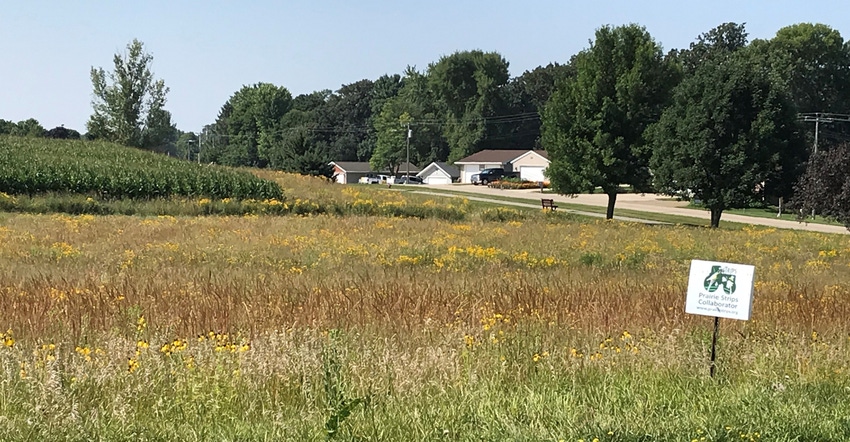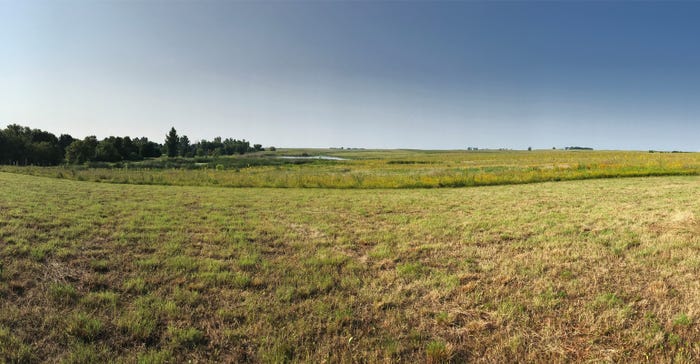September 17, 2018

By Matthew Helmers
Our Iowa Learning Farms youth program — Water Rocks! — travels around Iowa teaching students about land diversification and how to work with nature to keep our lands healthy and the water clean.
One of the ways we do this is through the newly revised and award-winning Rock Your Watershed! online game. Part of our revisions include adding more diversity to the land management choices that players can make and clearly showing the environmental benefits of diversifying our watersheds.
Traveling around Iowa and across the Midwest over the last several months really brought home to me how important this is and how far we need to go to still achieve the kind of diversity in crop and soil management systems that will make a difference.
Just like in our game, each small watershed has unique characteristics and capacities that must be considered when developing plans to diversify the landscape. And with each project, the knowledge and experience gained aids in understanding how to work with nature and within the natural ecosystem to get the best balance of results.
Restoring prairie, wetlands
I attended a field day recently near West Okoboji Lake focused on prairie and wetland restoration. The project is being implemented to help clean the water before it enters the lake. One of the side benefits of the project is an anticipated increase in wildlife, including pollinators of all sorts. The results reported at the field day were positive, and local stakeholders participating in the project expressed pride and ownership in making a difference for the environment and the cleanliness of the lake.
 TEAM UP PRACTICES: A prairie restoration and a wetland installed west of Lake Okoboji work together to clean the water before it enters the lake.
TEAM UP PRACTICES: A prairie restoration and a wetland installed west of Lake Okoboji work together to clean the water before it enters the lake.

When visiting a prairie strips site located directly east of Big Spirit Lake, I also heard positive reports. The site was installed a few years ago to enable natural filtering of nutrients and reduction of soil erosion to protect local water quality. In addition, these strips increase habitat for wildlife and encourage diversity. Again, local stakeholders came together to restore the land to help protect a local asset. I could hear the pride in their voices when discussing the changes they had put into place.
Include residents in decisions
Involving the folks who live and earn their livings near these restoration areas is a key piece to the puzzle of gaining traction. Participation in the decisions and collaboration on implementation generate strong ties to the project and the results.
For example, there are many options for perennial plantings in prairie strips or other restored lands. In some areas, the local folks are doing a good job of ensuring diversity in perennial plantings. In other areas, they’ve opted for monoculture grasses, mainly cool-season grasses that do not provide the diversity of native prairie but do provide substantial filtering capacity.
Ultimately, the benefits are tied to the effort put in by the stakeholders in the beginning and for many years ahead as the system matures and evolves.
As an engineer, I approach many issues from the perspective of applying technology to obtain desired results. However, in my travels this summer, it became very clear that many of the environmental issues we address cannot be solved by technology alone. Instead, we need to strategically apply technology that complements and strengthens natural systems to do the most good in terms assisting nature to restore healthy, vibrant and sustainable ecosystems.
Where to concentrate efforts
Through the strategic application of practices such as prairie strips and restored wetlands, combined with a solid understanding of the natural ecological system that was overtaken by a century of row crop agriculture and other development, continuous improvement can be made toward conservation goals. Modern technology, research and hands-on experience help us know where to place the natural system for the greatest benefit. After that, the natural system will do all the work.
Do you have areas of fields that tend to flood or are marginal and not very productive at growing corn and soybeans? Consider establishing prairie strips or a wetland.
If this is something that interests you for the land you own or manage, there is assistance and information available you can use. We are very fortunate in Iowa to have organizations such as the Tallgrass Prairie Center that have spent years figuring out how to support landowners in planting and managing prairie restoration on the land. For my part, I’m going to continue to work to understand how to best manage these systems and what technology is needed to allow diversity to flourish.
Putting natural systems to work
I encourage you to go online to waterrocks.org and play the Rock Your Watershed! game to learn how we can work better with the natural conservation systems.
Also, take some time to find those natural areas around you, and think about how we can use natural systems such as wetlands, prairie strips, oxbow restoration, riparian buffers and others to help clean our water, diversify our landscapes, increase wildlife and enhance the beauty on the land. I know I felt a little “restored” after my time in these natural settings.
Helmers is an Iowa State University professor of ag and biosystems engineering and a faculty adviser to the ILF Water Rocks! program.
You May Also Like




